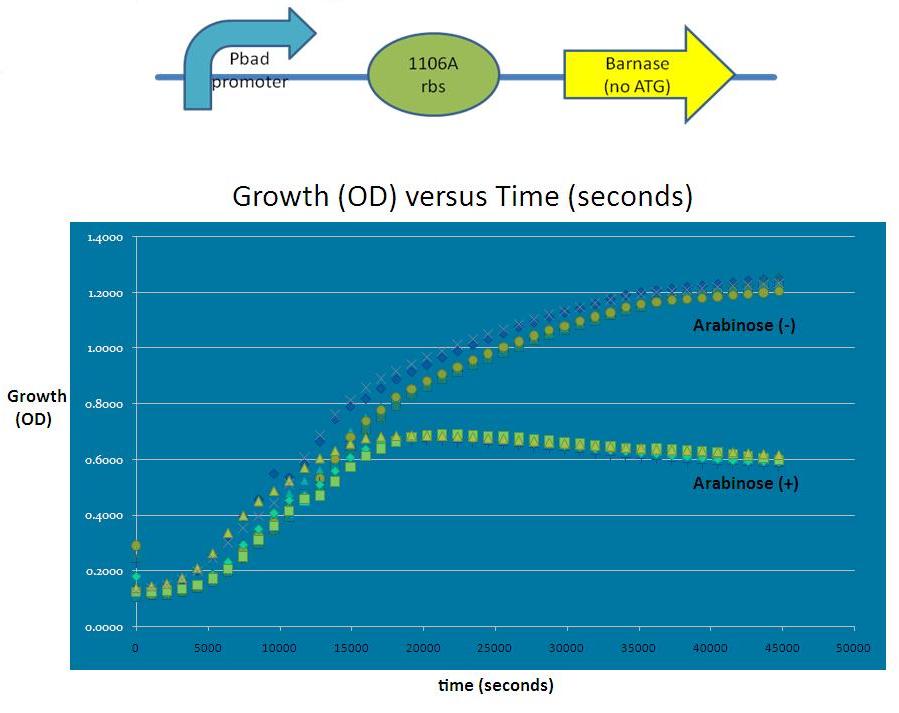BerkiGEM2007Present5
From 2007.igem.org
| Line 8: | Line 8: | ||
Growth control in our system is established by the incorporation of a plasmid that can be triggered to translate a toxin. The toxins are endonucleases or rnases that destroy the genetic material within a bacteria and thus prevent the bacteria from replicating. Throughout the summer, we worked on several systems that would accomplish the goal of growth regulation: <br> | Growth control in our system is established by the incorporation of a plasmid that can be triggered to translate a toxin. The toxins are endonucleases or rnases that destroy the genetic material within a bacteria and thus prevent the bacteria from replicating. Throughout the summer, we worked on several systems that would accomplish the goal of growth regulation: <br> | ||
| - | '''*********An Inducible Toxin <br> | + | ''' |
| + | *********An Inducible Toxin <br> | ||
*********A Disruptable Equilibrium Between an Endonuclease and a Methylase <br> | *********A Disruptable Equilibrium Between an Endonuclease and a Methylase <br> | ||
*********A Cre Recombinational Growth Switch''' <br> | *********A Cre Recombinational Growth Switch''' <br> | ||
Revision as of 07:10, 21 September 2007
This is a rough ROUGH draft. Excuse my spelling and grammar errors for now please!
Growth Control
Growth control in our system is established by the incorporation of a plasmid that can be triggered to translate a toxin. The toxins are endonucleases or rnases that destroy the genetic material within a bacteria and thus prevent the bacteria from replicating. Throughout the summer, we worked on several systems that would accomplish the goal of growth regulation:
- An Inducible Toxin
- A Disruptable Equilibrium Between an Endonuclease and a Methylase
- A Cre Recombinational Growth Switch
- An Inducible Toxin
Introduction
Safety blah blah. In essence, we want our cells to be a sac filled with hemoglobin.
An Inducible Toxin
Using a pBad promoter, we constructed several variations of inducible toxins, including the dnase ceaB from the coilicin activity protein, endonucleases BamHI and BglII, and rnase barnase. Additionally, ribosome binding site libraries were used in order to increase the likelihood of finding a construct that would exhibit no growth after being induced with arabinose, but normal growth when uninduced.
In the end, the construct that showed the desirable phenotype is the construct shown in the picture below. When uninduced, the cells showed growth comparable to regular DH10B cells, but when induced, the growth plateaus as the cells lose their ability to replicate due to RNA and DNA destruction.

- Note to self - adjust the graph such that it shows the control of just regular DH10B
- Also include microscopy images
Cre Recombination Model
- Still working on this!
Still working on this baby.